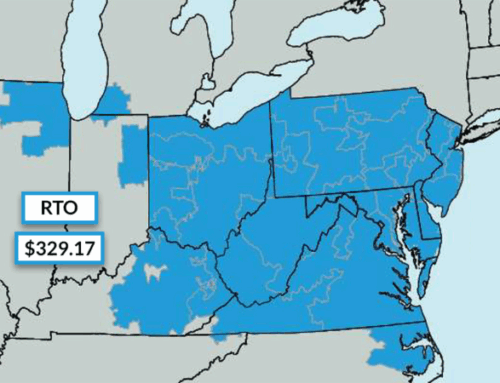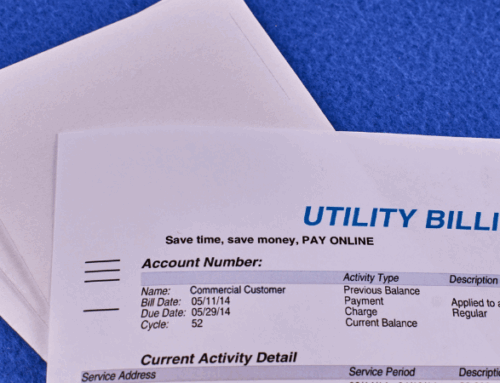Texas Senate Bill 6 (SB6), passed earlier this year, represents a major shift in how electricity infrastructure and reliability are regulated across the state and the ERCOT market.
Designed in response to growing concerns about grid stability, especially after events like Winter Storm Uri, SB6 gives regulators more oversight over large load interconnections, backup power requirements, and even behind-the-meter (BTM) energy projects. For data centers, crypto miners, BTM energy systems, and energy brokers operating in Texas, these changes could significantly impact costs, compliance, and project planning.
In this article, we break down what SB6 entails, how it affects different market participants, and what steps energy professionals should take to stay ahead.
What Is Texas Senate Bill 6 (SB6) And Why Was It Introduced?
Texas Senate Bill 6 (SB6) was introduced in response to anticipated grid instability in the ERCOT market as a result of increasing demand from data centers. Furthermore, the devastating effects of Winter Storm Uri in 2021, exposed major vulnerabilities and left millions of Texans without power. This prompted widespread public pressure for lawmakers to strengthen the state’s energy infrastructure and prevent future outages.
The primary goal of SB6 is to improve grid resilience and reliability across Texas. This includes ensuring that critical facilities and large energy users have adequate backup power, reducing the likelihood of statewide load shedding events, and reinforcing system reliability during extreme weather events.
To achieve these goals, SB6 grants the Public Utility Commission of Texas (PUCT) more authority over transmission interconnection approvals and mandates new compliance standards for large-scale loads and generation assets. The bill also opens the door for more oversight of behind-the-meter projects and backup systems and forces them to contribute financially to the transmission network. Let’s break down the details of the bill in more detail below.
How Does SB6 Affect Large Loads In ERCOT?
TX SB 6 introduces a more rigorous interconnection review process for large electrical loads, particularly those exceeding 10 MW. Under the new legislation, ERCOT is now required to conduct a detailed reliability impact study before approving these types of interconnections. This includes evaluating how the new load will affect grid stability, generation requirements, and load forecast planning across various scenarios. This section of the bill was driven by the increasing interest in data center development in Texas.
In practical terms, this means that any new data center, crypto mining operation, or industrial facility with a demand over 10 MW could face delays or outright denial if ERCOT determines that their grid integration would pose a risk to overall system reliability. These facilities may be asked to secure additional backup generation, participate in demand response, or invest in new generation and transmission infrastructure to gain approval.
For example, if a 100 MW data center is planning to be built in West Texas and applies for ERCOT interconnection. Under SB6, if ERCOT reviews the project and finds that the region is already transmission-constrained and heavily reliant on intermittent renewable generation. ERCOT could flag the project for exceeding local reserve margins and require the developer to install on-site generation, invest in grid upgrades, or reduce load before final approval is granted.
For developers and energy consultants, understanding these new requirements is essential to navigating ERCOT’s updated planning process and avoiding costly project delays.
What Are The New Requirements For Behind-the-Meter Assets?
SB6 opens the door for utilities and regulators to impose new cost obligations on energy users with behind-the-meter (BTM) systems, such as solar. One of the bill’s most consequential provisions allows utilities to propose tariffs or rules that would apply transmission charges to these BTM resources, including solar arrays, battery storage systems, and combined heat and power (CHP) units.
While these projects have traditionally been exempt from these grid-related fees due to their “non-exporting” status, SB6 introduces a shift in how these assets are viewed. Regulators are increasingly concerned about the lack of visibility, dispatchability, and potential impact on grid planning from behind-the-meter systems. The result? Businesses that once relied on BTM solutions to avoid capacity and transmission charges may find those advantages non-existent.
For example, if a college campus installed a 5 MW solar array paired with a battery system to reduce peak demand and avoid transmission charges. Under SB6, the local utility could propose a tariff that charges the facility a monthly fee based on its load contribution to the grid, even if that load is partially or entirely offset by its on-site generation. The justification would be that the solar system, while reducing net usage, still contributes to broader grid planning needs and reliability risk.
For businesses and energy consultants, SB6 signals the need to recalculate ROI on BTM investments and pay close attention to emerging utility tariffs and ERCOT compliance regulations.
What Impact Does SB6 Have On Backup Power?
SB6 introduces new mandates around backup generation and emergency response protocols, especially for facilities classified as critical load. Under the bill, large industrial users, data centers, hospitals, and other essential infrastructure may be required to maintain a minimum level of on-site backup power to support grid stability during extreme weather or demand events.
Additionally, SB6 gives ERCOT and utilities greater authority to remotely disconnect non-compliant or non-critical loads during these declared emergencies. This shift is meant to prevent grid-wide load shedding events like those seen during Winter Storm Uri, allowing operators to preserve essential services.
For example, a data center in West Texas currently relies on battery backup with no on-site generation. Under SB6, the facility may now be required to install natural gas or diesel generators capable of maintaining operations for 24 – 72 hours during a grid emergency. If the site fails to meet new backup generation thresholds or cannot demonstrate load-shedding capability, it could be flagged as non-compliant. In such a case, ERCOT may have the authority to remotely disconnect the facility during an emergency to protect the electric system.
This provision also affects co-located energy projects where backup systems are shared across multiple loads. These systems will now be subject to more stringent compliance review to ensure adequate coverage across all loads.
For energy consultants, brokers, and developers, SB6 demands a proactive review of client energy infrastructure to ensure compliance, avoid costly shutdowns, and preserve access to the grid under the new emergency operations protocol.
What Energy Brokers And Consultants Need To Know
Texas Senate Bill 6 (SB6) introduces new layers of regulatory complexity, but also opens the door for energy brokers and consultants to add serious value for their Texas customers. As ERCOT interconnection reviews tighten and costs increase, businesses will look to brokers to help them navigate compliance, plan strategically, and avoid costly missteps.
Energy brokers and consultants can play a critical role in guiding clients through ERCOT’s evolving rules for large load approvals, backup power requirements, and behind-the-meter assets. For example, a broker advising a multi-site manufacturing client can help evaluate distributed generation options and identify incentives for smart energy technologies.
Most importantly, brokers can help clients reframe their energy strategy by implementing smarter hedging strategies, regulatory compliance, and custom energy plans tailored to the new ERCOT landscape.
Need Help Navigating SB6 For Your Business?
Texas Senate Bill 6 brings major changes to ERCOT interconnection rules, backup power requirements, and costs for behind-the-meter projects. If you’re unsure how these updates might affect your business, we can help. Our team of experienced energy professionals understands the ERCOT landscape and can guide you through compliance, interconnection planning, and offer a distributed energy strategy. Whether you’re a data center, manufacturer, or commercial facility with on-site generation, we’ll help you stay ahead of the SB6 regulations and protect your bottom line.
Contact our team today to get started with a tailored consultation.



